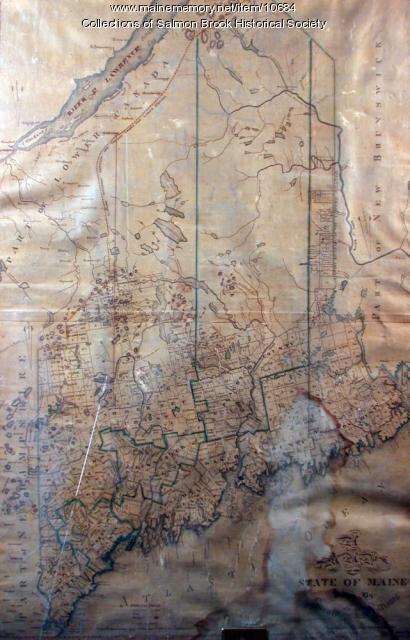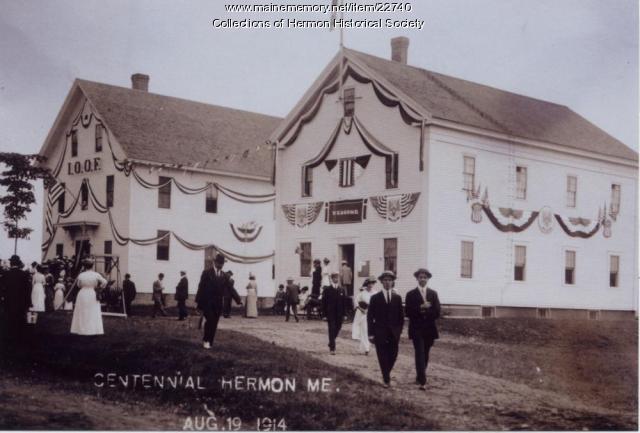Keywords: Agricultural societies
Item 8653
Maine State Agricultural Exhibition, 1860
Contributed by: Maine Historical Society Date: 1860 Location: Portland Media: Ink on paper
Item 5493
Pembroke agricultural fair, ca. 1890
Contributed by: Maine Historical Society Date: circa 1895 Location: Pembroke Media: Photographic print
Item 151761
Opportunity Farm cow barn, New Gloucester, ca. 1945
Contributed by: Maine Historical Society
Date: circa 1945
Location: New Gloucester
Client: Opportunity Farm Association
Architect: University of Maine Cooperative Extension Work in Agriculture
This record contains 2 images.
Item 151277
Asticou Azalea Garden, Mount Desert, 1982-1992
Contributed by: Maine Historical Society
Date: 1982–1992
Location: Mount Desert
Client: The Island Foundation
Architect: Patrick Chasse; Landscape Design Associates
This record contains 2 images.
Exhibit
Blueberries to Potatoes: Farming in Maine
Not part of the American "farm belt," Maine nonetheless has been known over the years for a few agricultural items, especially blueberries, sweet corn, potatoes, apples, chickens and dairy products.
Exhibit
Fair Season: Crops, Livestock, and Entertainment
Agricultural fairs, intended to promote new techniques and better farming methods, have been held since the early 19th century. Before long, entertainments were added to the educational focus of the early fairs.
Site Page
View collections, facts, and contact information for this Contributing Partner.
Site Page
Salmon Brook Historical Society
View collections, facts, and contact information for this Contributing Partner.
Story
How roses became a big part of my life
by Clarence Rhodes
Clarence Rhodes's experiences growing, exhibiting, and judging roses in Maine and around the world.
Lesson Plan
Teddy Roosevelt, Millie, and the Elegant Ride Companion Curriculum
Grade Level: 3-5, 6-8
Content Area: Social Studies
These lesson plans were developed by Maine Historical Society for the Seashore Trolley Museum as a companion curriculum for the historical fiction YA novel "Teddy Roosevelt, Millie, and the Elegant Ride" by Jean. M. Flahive (2019). The novel tells the story of Millie Thayer, a young girl who dreams of leaving the family farm, working in the city, and fighting for women's suffrage. Millie's life begins to change when a "flying carpet" shows up in the form of an electric trolley that cuts across her farm and when a fortune-teller predicts that Millie's path will cross that of someone famous. Suddenly, Millie finds herself caught up in events that shake the nation, Maine, and her family. The lesson plans in this companion curriculum explore a variety of topics including the history of the trolley use in early 20th century Maine, farm and rural life at the turn of the century, the story of Theodore Roosevelt and his relationship with Maine, WWI, and the flu pandemic of 1918-1920.
Lesson Plan
Building Community/Community Buildings
Grade Level: 6-8
Content Area: Social Studies
Where do people gather? What defines a community? What buildings allow people to congregate to celebrate, learn, debate, vote, and take part in all manner of community activities? Students will evaluate images and primary documents from throughout Maine’s history, and look at some of Maine’s earliest gathering spaces and organizations, and how many communities established themselves around certain types of buildings. Students will make connections between the community buildings of the past and the ways we express identity and create communities today.
















